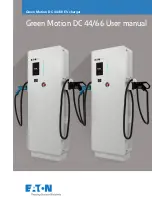
10 |
| 11
SAFETY
SAFETY
Airbags
Your vehicle is equipped with four types of airbags: front airbags, side airbags, side
curtain airbags, and a driver’s knee airbag.
Front Airbags (SRS)
The front SRS airbags inflate in a moderate-to-severe frontal collision to help
protect the head and chest of the driver and/or front passenger. They are housed
in the center of the steering wheel for the driver, and in the dashboard for the
front passenger. Both airbags are marked
SRS AIRBAG
.
SRS (Supplemental Restraint System) indicates that the airbags are designed to
supplement seat belts, not replace them. Seat belts are the occupant’s primary
restraint system.
Driver’s Knee Airbag
The driver’s knee SRS airbag inflates with the driver’s front airbag in a moderate-
to-severe frontal collision to help keep the driver in the proper position and to
help maximize the benefit provided by the vehicle’s other safety features.
Advanced Airbags
The airbags have advanced features to help reduce the likelihood of airbag-
related injuries to smaller occupants.
The driver’s advanced airbag system includes a seat
position sensor. Based on information from this
sensor and the severity of the impact, the advanced
airbag system determines the optimal deployment
of the driver’s airbag.
The front passenger’s advanced airbag system has
weight sensors. We advise against allowing a child
under the age of 12 to ride in the front passenger’s
seat. However, if you do allow a child age 12 or
under to ride in the front passenger’s seat, note
that the system will automatically turn off the
front passenger’s airbag if the sensors detect that
the child is approximately 65 lbs (29 kg) or less.
For the advanced front airbags to work properly:
• Do not spill any liquid on or under the seats.
• Do not put any object under the passenger’s seat.
• Make sure any objects are positioned properly on the floor. Improperly
positioned objects can interfere with the advanced airbag sensors.
• All occupants should sit upright and wear their seat belts properly.
• Do not cover the passenger’s side dashboard with a cloth, towel, cover, etc.
• Make sure the floor mat behind the front passenger’s seat is hooked to the floor
mat anchor. An improperly placed mat can interfere with the advanced airbag
sensors.
Driver’s
seat
position
sensor
Passenger’s
seat weight
sensors
Side Airbags
The side airbags help protect the upper torso and pelvis of the driver or a front
passenger during a moderate-to-severe side impact. They are housed in the
outside edge of the driver’s and front passenger’s seat-backs. Both are marked
SIDE AIRBAG
.
Side Curtain Airbags
The side curtain airbags help protect the heads of the driver and passengers in
outer seating positions during a moderate-to-severe side impact impact. The
side curtain airbags equipped in this vehicle are also designed to help reduce the
likelihood of partial and complete ejection of vehicle occupants through side
windows in crashes, particularly rollover crashes.
The side curtain airbags are located in the ceiling
above the side windows on both sides of the
vehicle.
The side curtain airbags are designed to deploy
in a rollover or moderate-to-severe side impact.
If the SRS control unit senses that your vehicle is
about to roll over, it immediately deploys both side
curtain airbags and activates both front seat belt
tensioners. If the impact is on the passenger’s side,
the passenger’s side curtain airbag will inflate even
if there are no occupants on that side of the vehicle.
To get the best protection from the side curtain
airbags, occupants should wear their seat belts
properly and sit upright and well back in their seats.
Do not attach any objects to the side windows or roof pillars, as they can interfere
with the proper operation of the side curtain airbags.
When side curtain airbags deploy in a frontal collision
One or both side curtain airbags may inflate in a moderate-to-severe angled
frontal collision.
Side curtain airbag storage
Deployed side curtain airbags










































